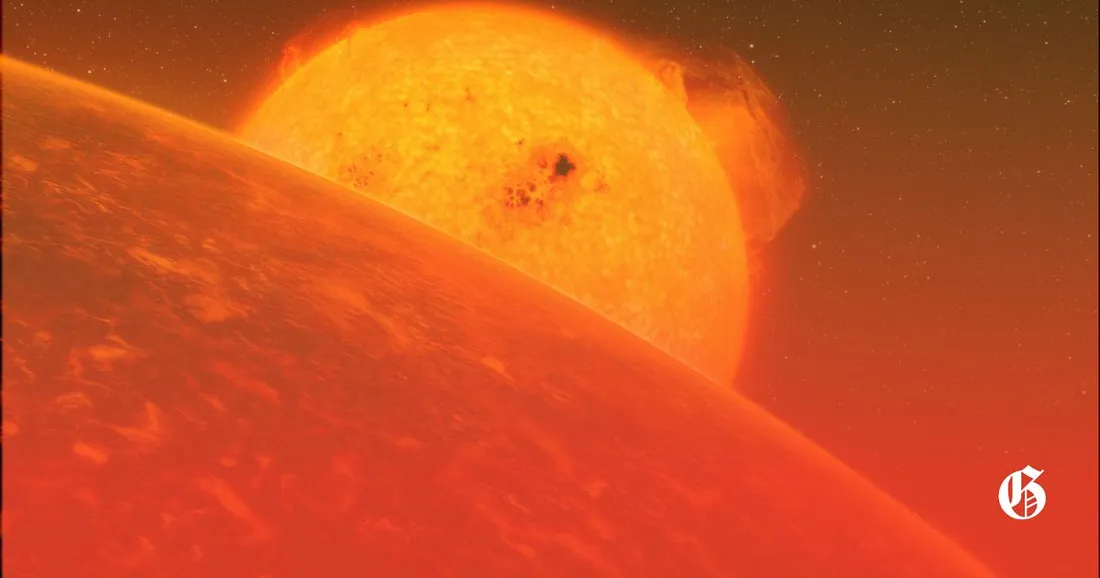The Search for Habitable Exoplanets
The search for extraterrestrial life has captivated both scientists and the general public for centuries. With advancements in technology and a deeper understanding of the universe, we can now identify and study exoplanets—planets outside our solar system—with unprecedented detail. A key aspect of astrobiology is assessing the habitability of these distant worlds, which refers to their ability to support life as we know it. This article delves into the critical factors that influence the habitability of exoplanets, including atmospheric conditions, temperature, and chemical composition.
1. The Goldilocks Zone: The Habitable Zone Concept
One of the most fundamental concepts in the study of exoplanet habitability is the “Goldilocks Zone,” or habitable zone. This is the region around a star where temperatures are just right for liquid water to exist on a planet’s surface—not too hot and not too cold.
- Temperature: The temperature of an exoplanet is mainly influenced by its distance from its host star, the star’s luminosity, and the planet’s atmospheric composition. A planet too close to its star will likely be too hot, causing water to evaporate, while a planet too far away will be too cold to sustain liquid water. For example, Earth resides in the habitable zone of our Sun, where average temperatures allow for liquid water, which is essential for life.
2. Atmospheric Conditions: The Protective Layer
The atmosphere of an exoplanet is crucial for its habitability. It serves several functions, such as:
- Shielding from Radiation: An atmosphere acts as a protective shield, blocking harmful radiation from the star. For example, Earth’s atmosphere absorbs much of the solar and cosmic radiation, creating a more hospitable environment for life.
- Temperature Regulation: The atmosphere helps regulate surface temperatures through the greenhouse effect. Gases like carbon dioxide, methane, and water vapor trap heat, maintaining a stable temperature that supports life. However, a thick atmosphere can lead to a runaway greenhouse effect, like on Venus, making the planet uninhabitable.
- Chemical Composition: The composition of a planet’s atmosphere can hint at the possibility of life. For instance, the presence of oxygen and methane together could suggest biological activity, as these gases typically react and are rarely found in significant amounts in equilibrium.
3. Chemical Composition: The Building Blocks of Life
The chemical composition of an exoplanet is essential for understanding its potential habitability. Life on Earth is carbon-based, relying heavily on elements such as carbon, hydrogen, oxygen, nitrogen, phosphorus, and sulfur. The availability of these elements is crucial for the formation of organic molecules.
- Water: Liquid water is a vital solvent for biochemical reactions, and its presence is a key indicator of habitability. Exoplanets in the habitable zone of their stars are more likely to possess liquid water, especially if they have a suitable atmosphere.
- Essential Elements: Beyond water, other elements are necessary for life. For instance, phosphorus is key for DNA, while nitrogen is vital for proteins. Planets that have access to these essential building blocks are more likely to support life.
4. Geological Activity: A Dynamic Environment
A planet’s geological activity plays a significant role in its habitability. Active geology can facilitate the recycling of nutrients necessary for life.
- Plate Tectonics: On Earth, plate tectonics help recycle carbon and maintain a stable climate over geological timescales. The movement of tectonic plates also creates diverse habitats, supporting biological diversity.
- Volcanic Activity: Volcanism can release gases into the atmosphere, contributing to the greenhouse effect and the formation of new landforms. Volcanic islands, for example, often host unique ecosystems and distinct species.
5. Stellar Characteristics: The Host Star’s Influence
The type and behavior of a star significantly affect the habitability of its planets. Some key factors include:
- Stellar Stability: Stable stars, like our Sun, are better suited for hosting habitable planets. Stars that are unstable, with frequent flares and varying luminosity, can create harsh conditions on surrounding planets, making them less likely to support life.
- Type of Star: The spectral type of a star (e.g., red dwarf, yellow dwarf, blue giant) determines its temperature, luminosity, and lifespan. While red dwarfs are more common and can host potentially habitable planets, their stellar activity and the tidal locking of close-orbiting planets complicate habitability.
6. Finding Habitable Exoplanets
The search for habitable exoplanets involves numerous space missions and ground-based observations. Telescopes like the Kepler Space Telescope and the James Webb Space Telescope are enhancing our understanding of exoplanet atmospheres and their potential for life.
- Spectroscopy: Scientists use spectroscopy to analyze the light from a star as it passes through a planet’s atmosphere. This technique helps detect specific gases and chemical signatures that may indicate the presence of life or other habitable conditions.
- Direct Imaging: Techniques such as direct imaging allow astronomers to observe exoplanets in detail, analyzing their atmospheric conditions and surface characteristics.
Conclusion
Understanding the habitability of exoplanets is a complex challenge, influenced by factors such as atmospheric conditions, temperature, chemical composition, geological activity, and the characteristics of the host star. As technology improves, our ability to study distant worlds will continue to advance, bringing us closer to answering one of humanity’s most profound questions: Are we alone in the universe? Through ongoing research and exploration, we may one day uncover the secrets of habitable worlds beyond our own.











